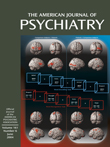Serotonin Syndrome With Tramadol and Citalopram
Ms. A was a 70-year-old Caucasian woman with a 30-year history of mild recurrent depressive disorder whose illness had been in remission for 3 years while she was taking 10 mg/day of citalopram. Three days after an abdominal operation, she began taking 50 mg/day of tramadol for pain relief, but she subsequently developed tremors, restlessness, fever, confusion, and visual hallucinations. Her symptoms stopped after termination of tramadol therapy. One year later, she developed identical symptoms upon taking 20 mg/day of tramadol after an abdominal hernia operation. Ms. A had been taking citalopram without interruption.To assess Ms. A’s drug metabolizing activity, we genotyped her for the functional polymorphisms in cytochrome P450 enzymes CYP2D6 and CYP2C19, revealing her to be heterozygous for alleles causing deficient activity in both enzymes (CYP2D6*1/*4 and CYP2C19*1/*2). Her racemic citalopram clearance was 3.0 ml/kg/min, which is lower than the usual mean of 5.5 ml/kg/min (SD=1.7) (5).Under combination therapy with citalopram and tramadol, Ms. A showed symptoms typical of serotonin syndrome. Re-exposure to the same drug combination resulted in the same symptoms, leading us to the conclusion that we were indeed dealing with drug-induced serotonin syndrome.
References
Information & Authors
Information
Published In
History
Authors
Metrics & Citations
Metrics
Citations
Export Citations
If you have the appropriate software installed, you can download article citation data to the citation manager of your choice. Simply select your manager software from the list below and click Download.
For more information or tips please see 'Downloading to a citation manager' in the Help menu.
View Options
View options
PDF/EPUB
View PDF/EPUBGet Access
Login options
Already a subscriber? Access your subscription through your login credentials or your institution for full access to this article.
Personal login Institutional Login Open Athens loginNot a subscriber?
PsychiatryOnline subscription options offer access to the DSM-5-TR® library, books, journals, CME, and patient resources. This all-in-one virtual library provides psychiatrists and mental health professionals with key resources for diagnosis, treatment, research, and professional development.
Need more help? PsychiatryOnline Customer Service may be reached by emailing [email protected] or by calling 800-368-5777 (in the U.S.) or 703-907-7322 (outside the U.S.).

